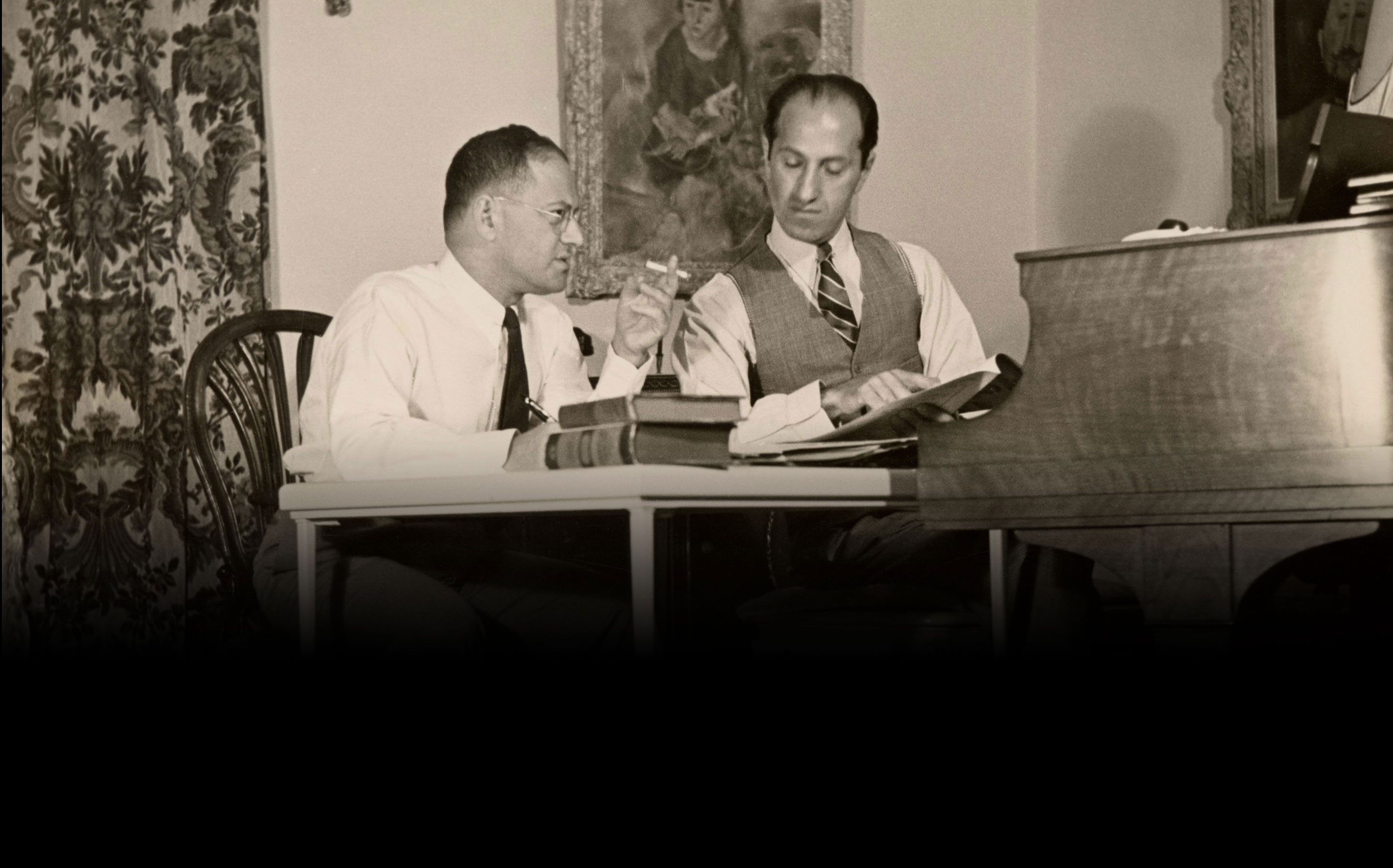Lady Be Good! The Making of the Gershwin Musical Comedy Machine
George and Ira Gershwin were enjoying increasing success in the early 1920s, but they had yet to write a hit show together. Lady Be Good is the story of how a single show changed the future of their careers and the future of Broadway’s musical theater.
By Sarah Sisk
1924 was a good year for the Gershwin brothers. That February had seen the premiere and subsequent popular success of George Gershwin’s Rhapsody in Blue. It was also the year that Ira Gershwin, who had been working with George and other composers to write song lyrics for musical theater, decided to drop his pseudonym “Arthur Francis.” As George and Ira’s repertoire grew, the name Gershwin continued to spread, cropping up in playbills and advertisements for successful Broadway productions. However, George and Ira had not yet written a successful musical comedy score together. Their first attempt was a production called A Dangerous Maid in 1921; with music by George and lyrics by “Arthur Francis,” it ran for just under a month and never made it to Broadway.
This was all to change when George made a business trip to London in the summer of 1924 to write the music for a British musical called Primrose (in which he actually managed to recycle some of the songs from A Dangerous Maid). While working on this production, George and some English business colleagues began discussing the possibility of writing a Broadway musical comedy that would pioneer new conventions for contemporary productions. Ira was eager to collaborate with his brother, and the two engaged in a dense and excited correspondence. In one of his letters, Ira promised to focus on their new “mutual effort, which has to be a hit!” (Rosenberg 79). The ensuing production, eventually titled Lady, Be Good! was indeed the hit Ira desired.
The Gershwin brothers were not the only sibling team involved in the musical: the lead roles were played by song-and-dance duo Fred and Adele Astaire. As children, the Astaires had performed in vaudeville acts across the United States, and a young Fred Astaire first befriended a young George Gershwin while the latter was working as a song plugger in 1916. In 1924, Fred and Adele were a new sensation on the London stage, but their international star status was forthcoming. Lady turned out to be to be the breakout Broadway show for the Astaires as well as the Gershwins. The brother and sister later starred in another Gershwin musical, Funny Face (1927). Fred and George possessed a mutual admiration for each other’s talent, and they maintained a good friendship and professional relationship (notably, Fred sang and danced to George and Ira’s tunes on the silver screen in 1937, starring in the musical comedy film Shall We Dance). The two had an understanding of rhythmic language that allowed them to meld music and dance into an elevated form of artistry.
Interview with Fred Astaire, in which he talks about Gershwin.
During Lady’s development, the book writers, Guy Bolton and Fred Thompson, and the Gershwins worked closely with the Astaires. At the time, this was an unusual collaboration; performers were rarely involved in the creation of the shows in which they performed. Yet Lady’s creative process reflected its originators’ intentions to try something new, and George even referred to it as “the Astaire show” in his correspondence to Ira (Rosenberg 78, 80). The team fashioned the songs and scenes to suit Fred and Adele’s personality and dance styles, relying heavily on their input. Fred and George, especially, connected on a creative level. Fred was also a musician and composer, and as George was an excellent dancer himself, he was able to suggest dance steps to Fred. Along with Bolton and the producer, Alex Aarons, they earnestly discussed the context and placement of the songs within the story.
Lady opened on December 1, 1924, at the Liberty Theater on Broadway, and achieved near-instant acclaim, enjoying a long run on Broadway before touring the country and eventually playing in London. Fred and Adele portrayed the fictitious siblings Dick and Susie Trevor. In the show, Dick and Susie are down on their luck and are forced to choose between pursuing their romantic interests and rectifying their financial situation. They both suffer from unrequited love, Dick falling for the wealthy Shirley Vernon and Susie fancying the vagabondish Jack. Dick, ashamed of being poor, cannot bring himself to confess his love to Shirley, and instead proposes to Jo Vanderwater. Meanwhile, Susie teams up with a lawyer, who has been hired to secure an inheritance, by impersonating the widow of the beneficiary, Mr. Robinson. Eventually, Dick tells Shirley that he loves her, and Susie discovers that the man whose widow she’s pretending to be is none other than her crush, Jack. Luckily for the siblings, the show ends in true romantic comedy form, with wedding bells.
Lady raised the standard for American musical comedy on almost every level. Unlike the threadbare plots of many contemporary productions, the writers took care to craft a story that showcased the Astaires’ onstage personas. Throughout the show, the siblings delighted viewers with their vaudevillian slapstick routines, but they also introduced a more sentimental dimension that kept audiences emotionally invested. Likewise, George crafted musical consistency by writing a score and songs that meshed thematically, which was further augmented by the composer and actors’ close collaboration on the choreography. More than ever before, Ira displayed a singular sensitivity to his brother’s music by writing beguilingly simple lyrics which, when combined with the complex rhythms and inflections in the songs, portrayed humor, subtext, and emotion.
As a result, several of the songs surpassed the show’s original popularity and are remembered to this day as some of George and Ira’s best numbers, including the title song, “Oh, Lady Be Good!” and the second number in the show, “Fascinating Rhythm.” Lady simultaneously tapped into the public’s appetite for popular music and innovated within the form. It also catapulted the Gershwin brothers to a new level of professional success—a success which established beyond doubt their potential as musical partners.
Further Reading
Decker, Todd. Music Makes Me: Fred Astaire and Jazz. Berkeley And Los Angeles: University of California Press, 2011. Print.
Jablonski, Edward. The Gershwin Years: George and Ira. New York: Da Capo Press, 2996. Print.
Pollack, Howard. George Gershwin: His Life and Work. Berkeley And Los Angeles: University of California Press, 2006. Print.
Rosenberg, Deena. Fascinating Rhythm: The Collaboration of George and Ira Gershwin. Ann Arbor: The University of Michigan Press, 2000. Print.
Sarah Sisk is an undergraduate English major at U-M’s College of Literature, Science and the Arts. She joined the Gershwin Initiative team first in September 2015 through U-M’s UROP program and this summer became an editorial assistant.


1 Comment